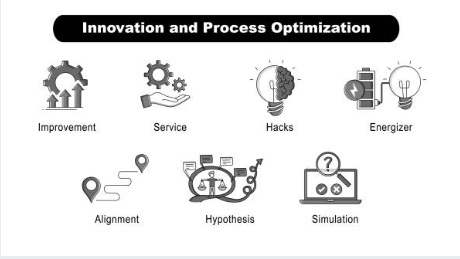Let’s face it — when it comes to process improvement, government gets a bad rap. The stereotype? Bureaucracy, bottlenecks, and paperwork thicker than a Tolstoy novel. Meanwhile, the private sector is out there tossing around terms like “lean,” “agile,” and “digital twin” like confetti. But here’s the thing: Behind all that jargon are some genuinely useful approaches — and yes, they can work for government too.
So, let’s drop the consultant-speak and look at what the private sector does well — and how public agencies can adapt those practices in a way that fits their mission, structure, and stakeholder reality.
1. Obsessing Over the User Experience

Private companies live or die by how customers interact with their products or services. That means mapping customer journeys, eliminating pain points, and making things intuitive. Government? Often, we inherit legacy systems and expect the public to adapt.
What to adapt: Start small — conduct a service blueprint for a high-impact process like benefits enrollment or permit approval. Interview real users. Make one improvement per quarter. Progress, not perfection.
2. Data-Driven Decision-Making (Without Drowning in Spreadsheets)
Many businesses have moved from rear-view reporting to real-time dashboards. Whether it’s sales, logistics, or support, metrics drive action.
What to adapt: Use accessible tools like Microsoft Power BI or Tableau Public to visualize key metrics (think case closure rates, service times, or budget spend). Don’t aim for perfection — aim for clarity and conversation.
3. Cross-Functional Collaboration
No more silos — companies that succeed align marketing, operations, and IT under shared goals. In government, stovepipes are still…robust.
What to adapt: Start with small, cross-departmental sprint teams focused on one issue. Don’t call it a tiger team (unless you’re handing out stripes), but do encourage shared wins.
4. Continuous Improvement (a.k.a. Kaizen, but Less Intimidating)
Companies like Toyota thrive on kaizen — daily, incremental process improvements driven by frontline employees.
What to adapt: Encourage teams to submit “process improvement ideas of the month.” Recognize and reward participation. The best insights often come from the cubicle, not the corner office.
5. Feedback Loops That Actually Close
Private orgs often obsessively track customer satisfaction (CSAT, NPS, etc.) and use it to improve products. Government feedback tools often collect dust post-survey.
What to adapt: Don’t just measure satisfaction — report back. Let users know what you changed. Transparency earns trust.
Final Thoughts
The goal isn’t to copy-paste private-sector tools into public agencies. It’s to adapt with intention. What works for Amazon might not work for your city clerk’s office — but a little lean thinking could make both faster and more citizen-friendly.
Plus, let’s not forget — government doesn’t have customers. We have constituents. And that means we have a duty to keep improving, not just a bottom line.
By translating best practices, empowering teams, and tracking what matters, public sector organizations can drive real change — without the buzzwords, and with all the impact.
Dr. Rhonda Farrell is a transformation advisor with decades of experience driving impactful change and strategic growth for DoD, IC, Joint, and commercial agencies and organizations. She has a robust background in digital transformation, organizational development, and process improvement, offering a unique perspective that combines technical expertise with a deep understanding of business dynamics. As a strategy and innovation leader, she aligns with CIO, CTO, CDO, CISO, and Chief of Staff initiatives to identify strategic gaps, realign missions, and re-engineer organizations. Based in Baltimore and a proud US Marine Corps veteran, she brings a disciplined, resilient, and mission-focused approach to her work, enabling organizations to pivot and innovate successfully.





Leave a Reply
You must be logged in to post a comment.